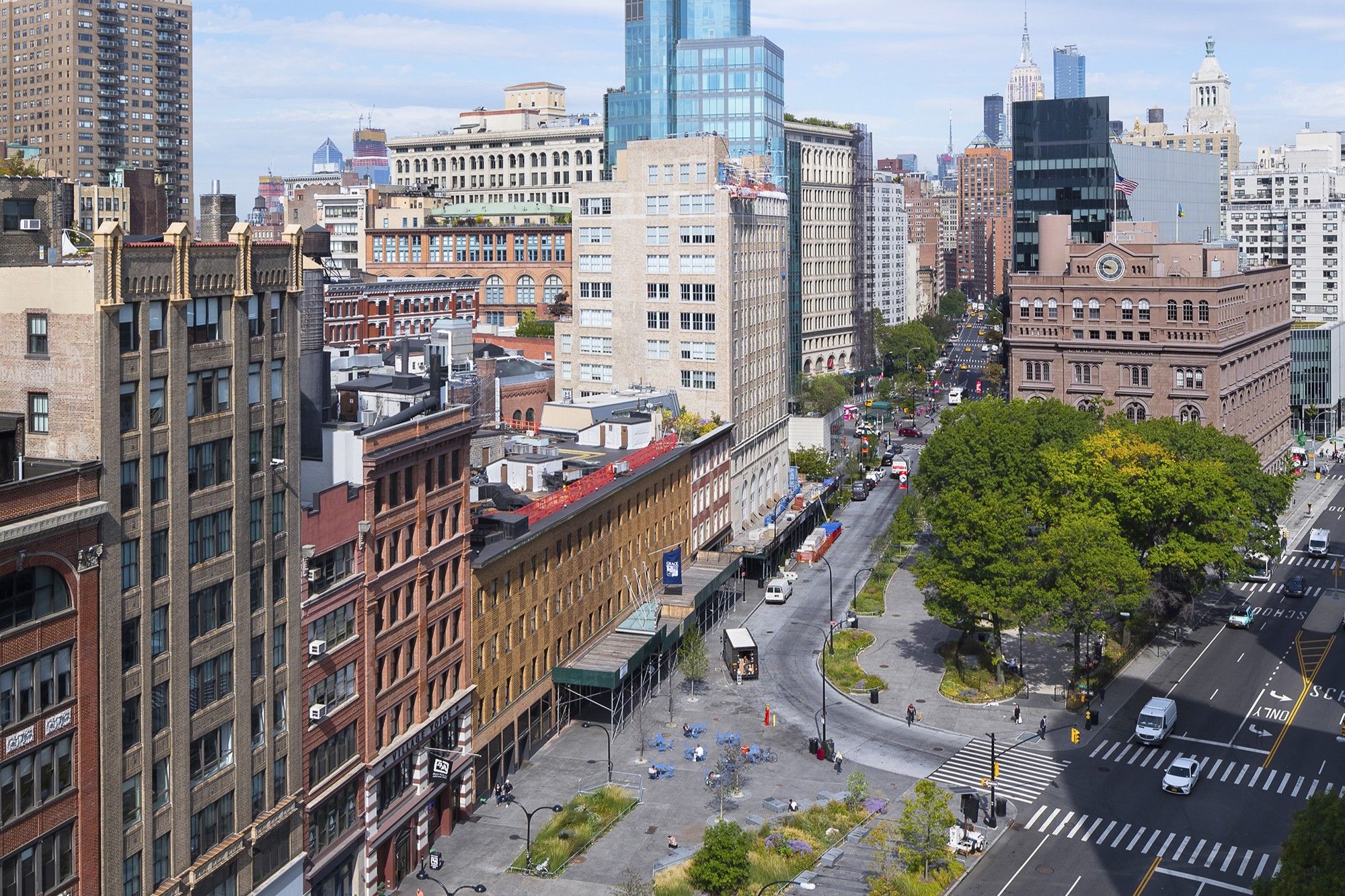
Aerial view of the Astor Place intersection.
Historic paths, shifting curb lines, and natural pause points guided the transformation of a fragmented site into a cohesive, functional public realm.
Our design for Astor Place and Cooper Square reclaims more than one acre of paved street space to create a pedestrian-first urban district. Envisioning three interlinked plazas along the 4th Avenue axis, the design introduces dynamic, multifunctional public spaces. Each plaza is conceived as a unique experience, tied together by a cohesive program of materials and forms, bringing purpose to this once chaotic traffic hub.
Astor Place and Cooper Square’s angled streets caused congestion, while long pedestrian crossings created a dangerous and fragmented experience for commuters, college students, and residents. This limited circulation left public spaces in the area largely unused, offering minimal opportunities for gathering. The absence of central, defining features and mixed use of materials made it difficult for the neighborhood to establish a distinct, cohesive identity.
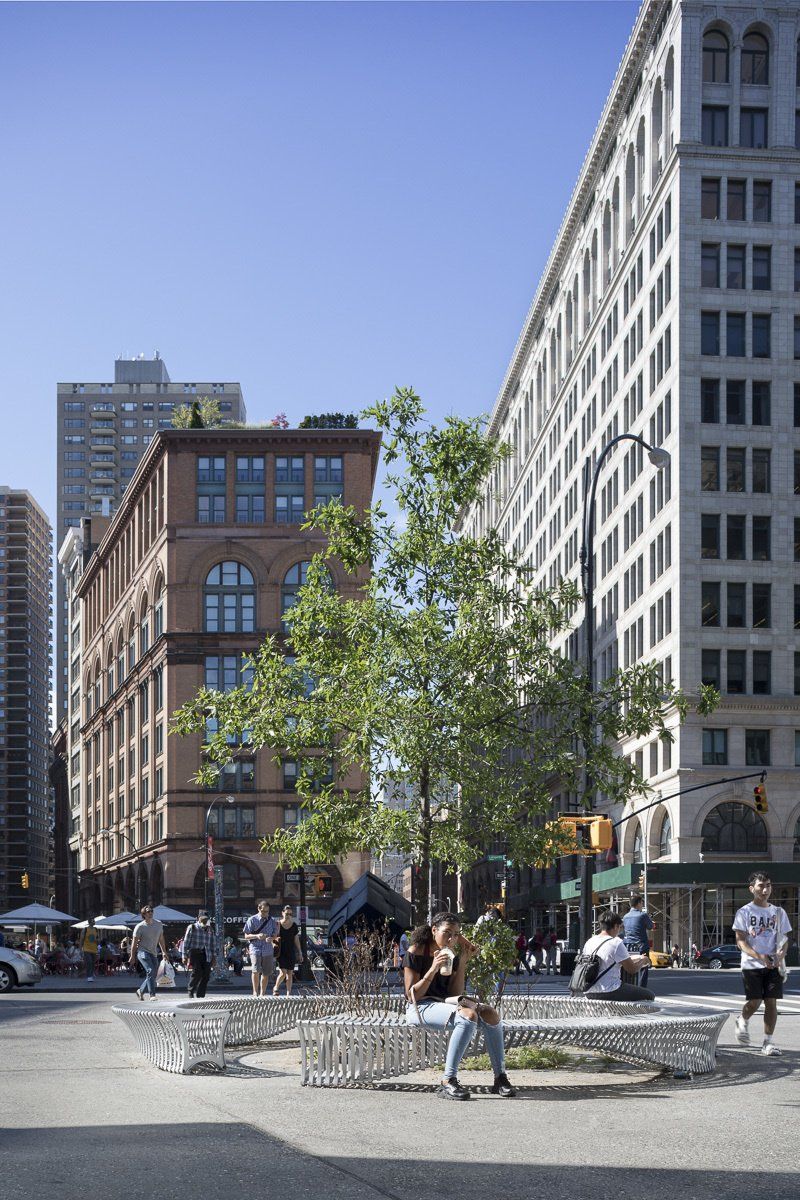
The signature zipper bench blends dynamic form with functionality.
Our plan for Astor Place and Cooper Square is a strategic reimagining of the public space, with the roadways becoming three linked plazas along 4th Avenue, each with a distinct character unified by elliptical forms, cohesive paving, and shared materials. The project prioritizes pedestrian safety and accessibility with widened sidewalks along Peter Cooper Park. Traffic moves in defined paths, replacing previous chaos with order. Sustainability and resilience play a central role, with porous pavers, bioswales, and materials like high fly-ash concrete that manage stormwater and promote ecological health. Inviting seating—granite blocks, stone steps, and signature “zipper benches”—fosters informal gathering and community engagement. The design celebrates local history, restoring cultural artifacts like Jim Power’s mosaic lampposts and the historic subway kiosk. Flexibility means the public realm can host outdoor cafés, markets, and pop-up events, ensuring continued relevance as a vibrant civic hub.
This comprehensive vision came to life through strategic partnerships with celebrated arborist Piet Oudolf, landscape architects Quennell Rothschild & Partners, and Tillett Lighting Design. The collaboration yielded tangible results and expanded pedestrian space along the busy intersections from East 4th to East 9th Streets around Astor Place.
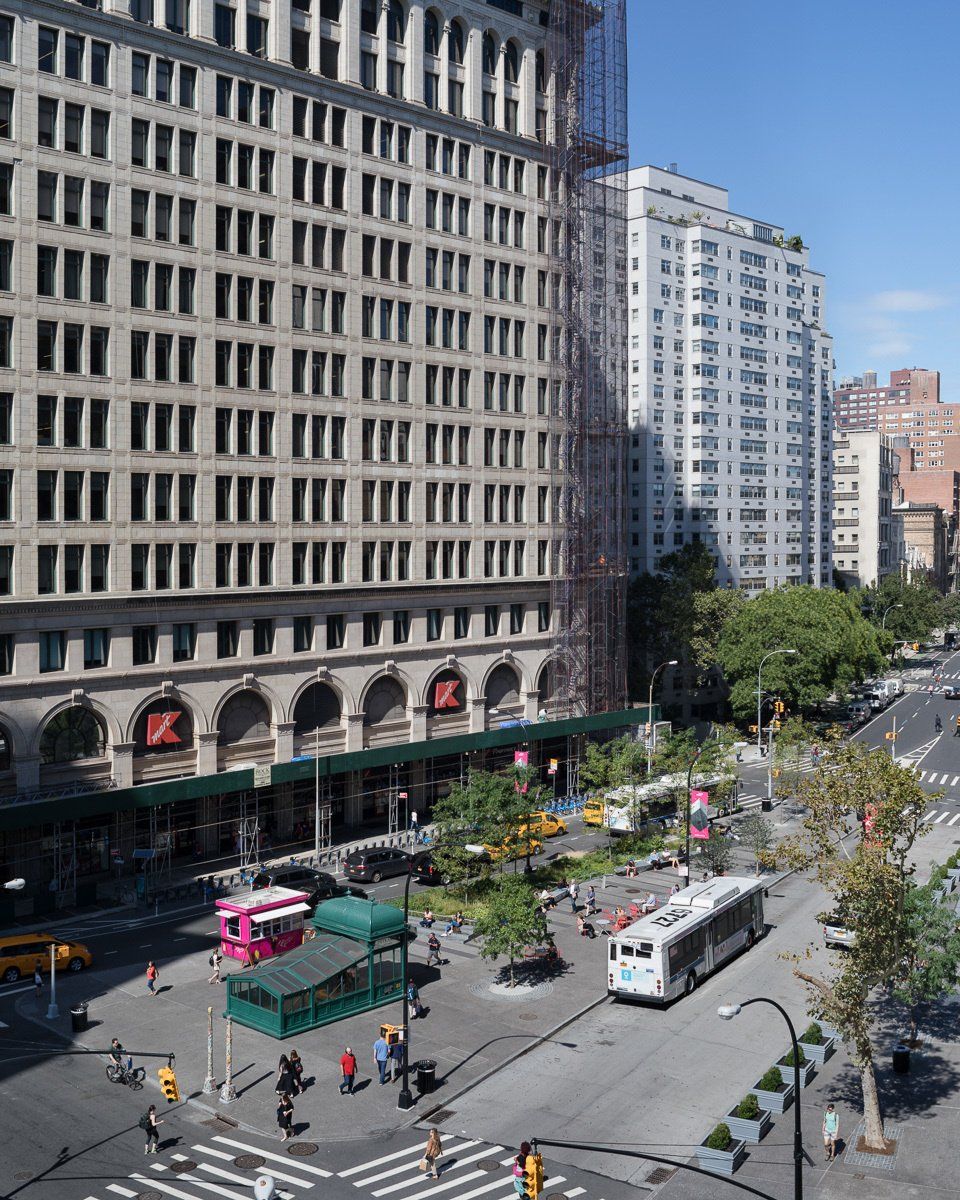
Transit and pedestrians flow harmoniously through the streetscape at Astor Place.
The transformation of Astor Place and Cooper Square significantly impacts safety, accessibility, and urban vitality. The project closes a portion of the surrounding streets and makes some streets narrower and one-way, enabling the conversion of the area into pedestrian plazas, including the new Village Plaza, a two-block triangular space. Safety improves with new medians, expanded curbs, and the correction of hazardous intersections, making pedestrian crossings safer. Green enhancements, such as an expanded Peter Cooper Park, additional trees, and bioswales, improve storm drainage and create a more welcoming, sustainable public realm.
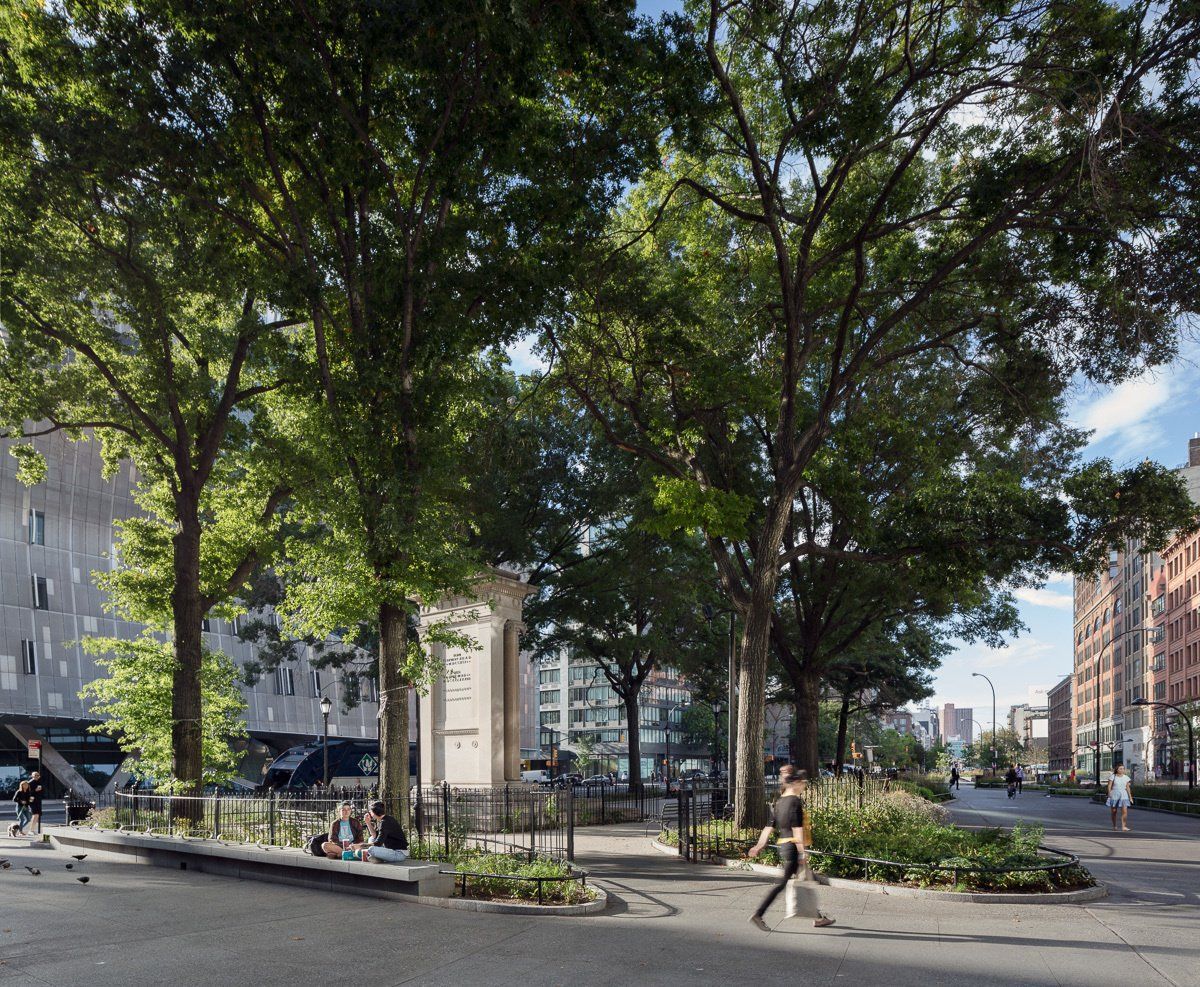
Shaded by mature trees, the reimagined plaza integrates greenery and historic elements into the urban core.
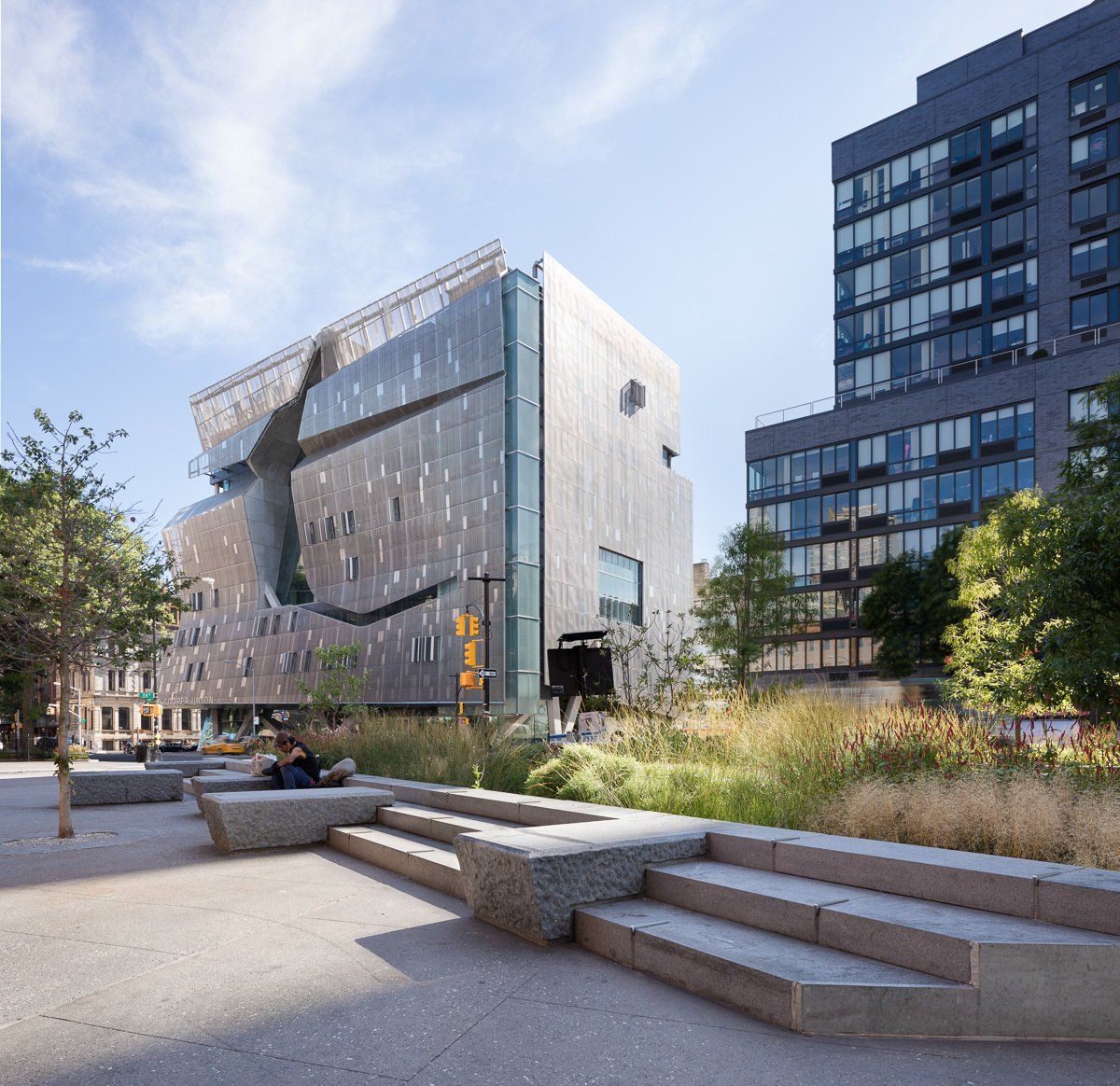
41 Cooper Square by Morphosis anchors the plaza, its angular form contrasting with natural landscape elements.
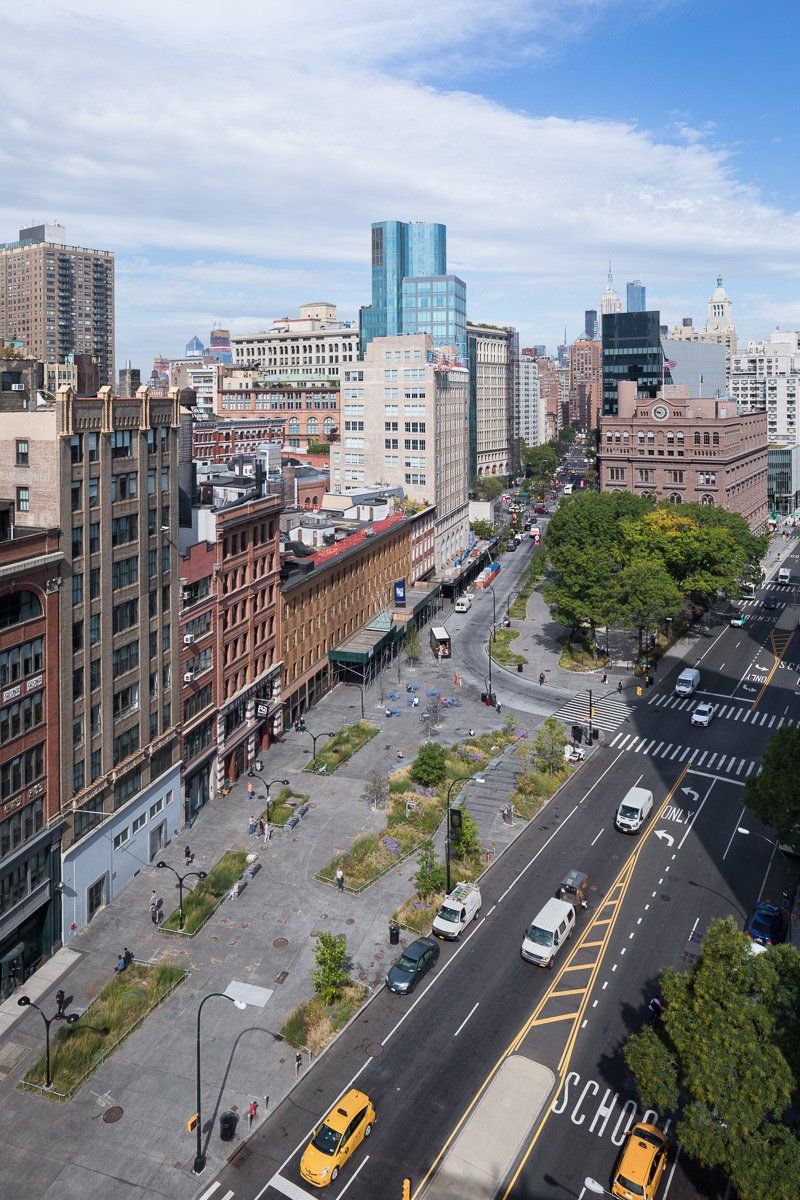
Aerial perspective reveals landscaped plazas integrating seamlessly with the urban fabric.
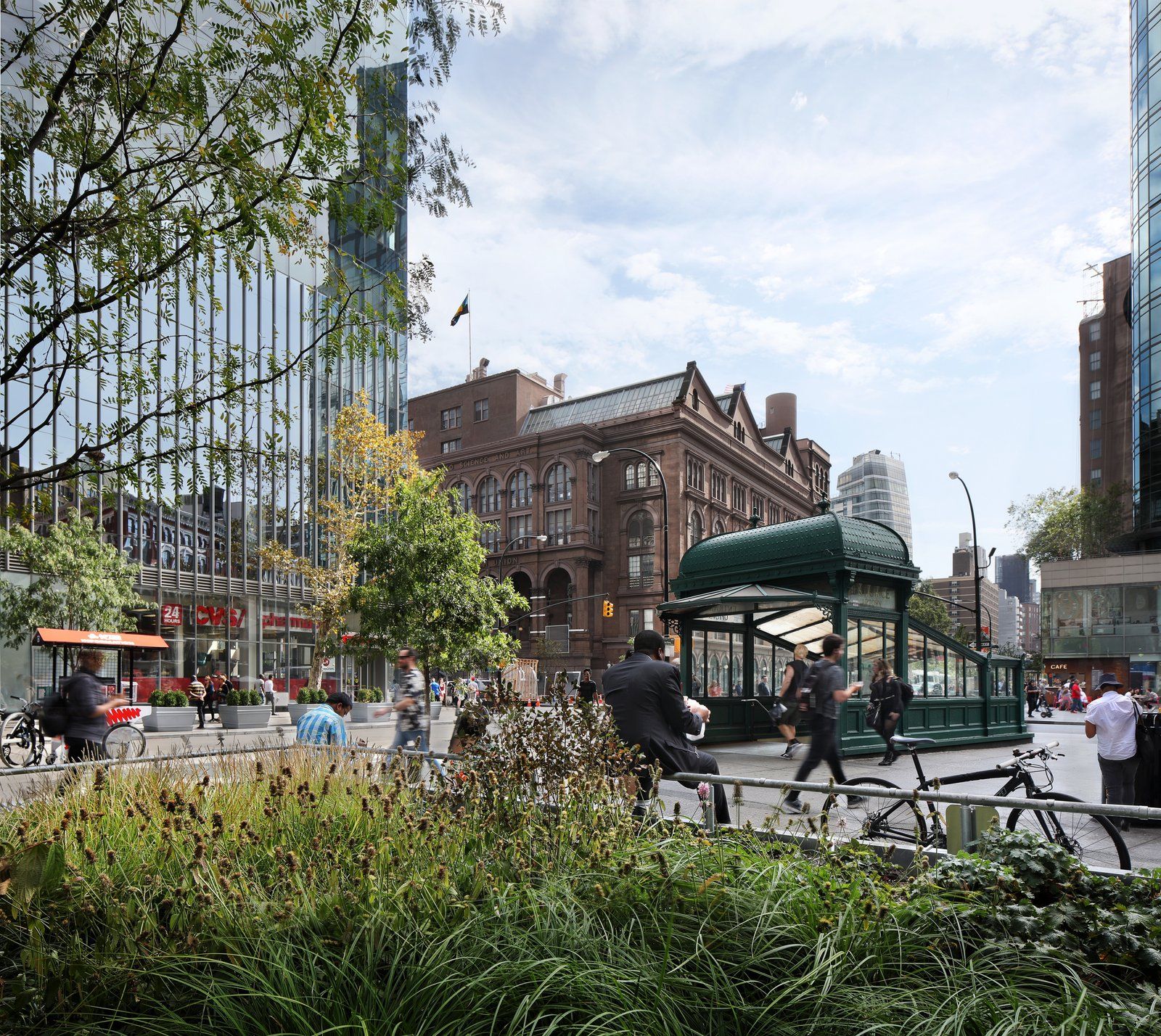
The restored subway kiosk anchors the plaza, blending historic charm with lush plantings and active streetscapes.
Claire Weisz Architects LLP
d/b/a WXY architecture + urban design
212 219 1953
office@wxystudio.com
Careers ↗
New York
25 Park Place, 5th Floor
New York, NY 10007
Toronto
30 St. Patrick Street, 5th Floor
Toronto, ON M5T 3A3 Canada
Subscribe to our newsletter
Site designed by Clinton Van Arnam
Developed by Mario Giampieri